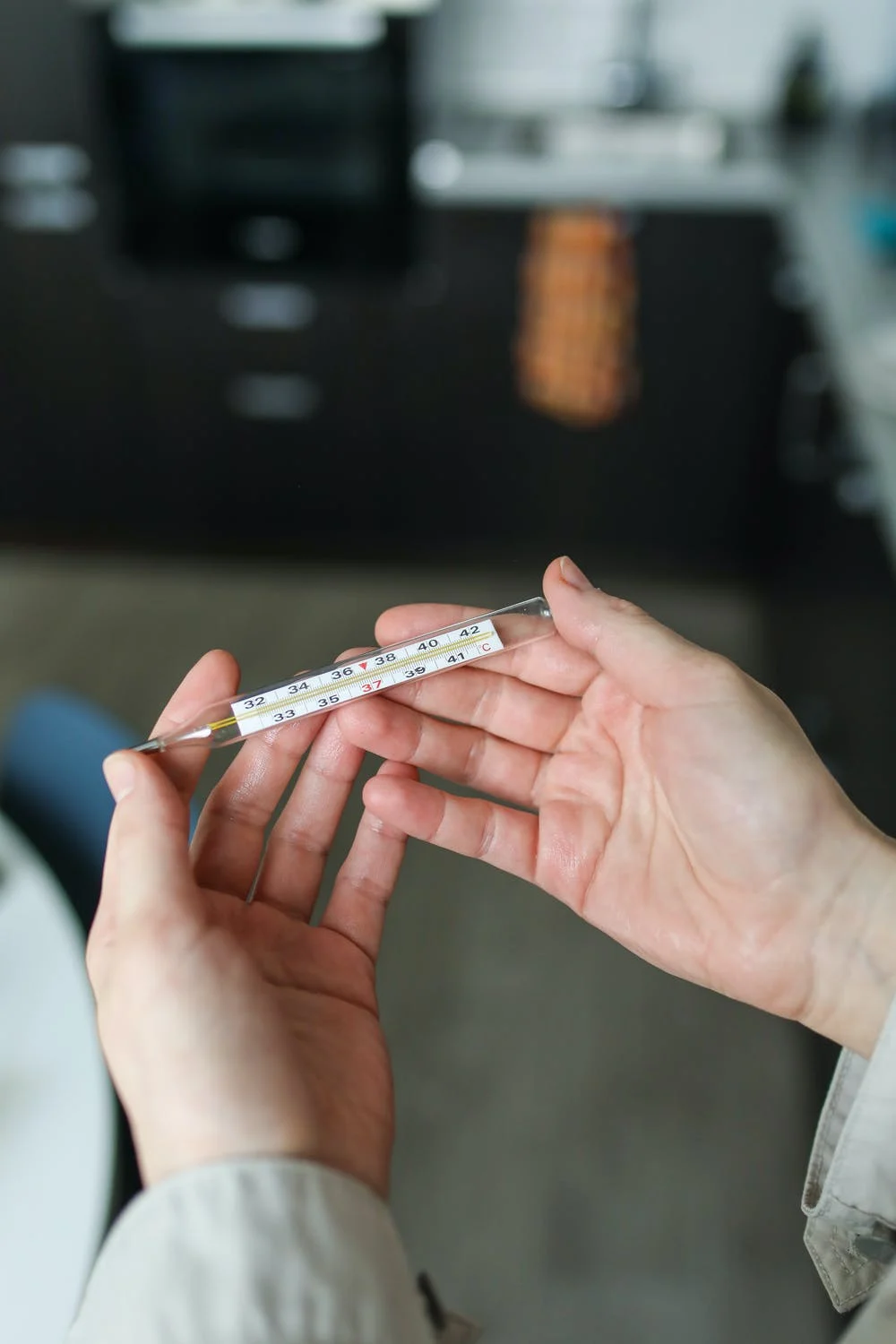It can be hard to consistently track where you are in your menstrual cycle and when you are ovulating. Your basal body temperature (BBT) may help you understand your fertility for natural family planning. Tracking your BBT is a popular method, and it is relatively quick and easy to do with just a thermometer. This article will provide you with all the information you need about tracking your basal body temperature to support you when you are trying to conceive.
What is basal body temperature?
Your basal body temperature (BBT) is your body's temperature when it is entirely at rest. It rises by 0.2-0.6°C when you ovulate, and this is caused by the rise in your hormone progesterone. Your BBT will remain higher for the rest of your cycle and drop just before your period starts, unless you are pregnant. If you have become pregnant, your progesterone levels will remain high and, thus, so will your BBT. Because BBT increases once ovulation has occurred, you will typically be most fertile for two-three days before your temperature rises.
Tracking and measuring BBT can provide you with vital information about where you are in your menstrual cycle, giving you a good indication of when ovulation is taking place every month and, also, if you have conceived. It is essential to note, however, that you need to track your BBT for approximately 3 months so you get a pattern of temperature changes throughout your cycle. This can then help you predict when you are approaching ovulation and, thus, when you are in your fertile window (the days preceding ovulation).

Choosing a BBT chart
The first step to tracking your BBT is to choose a basal body temperature chart. A chart is a record of the temperature measurements you’ve made every day over your menstrual cycle. Charting your BBT will allow you to see changes and patterns throughout your cycle and help you identify when you are in your most fertile days.
Our midwife-developed Ovulation Chart is downloadable and printable, and it is also included in our not-for-profit Trying to Conceive Kit. BBT charts can also be found in some fertility books, online and as part of fertility apps. Alternatively, you could create your own chart by using squared paper and plotting the temperature range along the vertical axis - a tenth of a degree for each square - and the days of the cycle on the horizontal axis. For ease and to avoid mistakes, though, most women prefer to use an already existing chart.
How can I track my BBT?
Tracking your BBT is a simple process yet, to ensure accuracy, you will need to be consistent and follow certain rules. You will need to
- Take and note your temperature every morning before getting out of bed. You can track your temperature using a regular thermometer or a special basal thermometer used to measure BBT. Ensure you always take your temperature in the same way (for example, orally) for an accurate reading.
- Get at least three hours of uninterrupted sleep. The results are likely to be more accurate.
- Take the temperature at the same time every day, or as close as possible to the same time - ideally within 30 minutes. Setting an alarm clock or a reminder can be useful.
- Record your temperature on the chart. Over time you will see a pattern. If your recorded temperature has changed by an average of 0.4 degrees Celcius in 48 hours over three days, ovulation has likely occurred.

How to take Basal Body Temperature
If you take your temperature orally, measure basal body temperature like you would when you’re sick. Hold it under your tongue until you hear a signal (if you have an electric thermometer). If you have a mercury thermometer, hold it in place for at least five minutes. It is important to note not to take your temperature under your arm as it will not provide an accurate reading. You can also take your BBT vaginally or rectally - if you choose this method, make sure you disinfect the thermometer immediately after each use.
If you notice that your temperature remains higher for at least 18 days after ovulation and your period hasn’t started - or you are only spotting -, it could be a good idea to take a pregnancy this could be a sign of early pregnancy. If pregnancy does not occur, your progesterone levels and, thus, your BBT will drop, leading to a period.
Other things to track alongside BBT
Cervical mucus
Tracking your cervical mucus offers you invaluable insight and goes hand-in-hand with charting your BBT. Changes in your cervical mucus (vaginal discharge) can tell you what stage of your menstrual cycle you are at, including when you are about to ovulate, which can be extremely helpful for ensuring you have sex during your most fertile days. Learn more about your cervical mucus changes here.
Cervical position
You can also track your cervical position to help detect and predict ovulation. With some practice, you may be able to predict when ovulation is approaching as your cervix will be higher in your vagina, and it will feel softer and more open. Once ovulation is over, your cervix cahnges and becomes firmer, lower and closed.
Illness, stress and sleep
Illnesses such as colds, increased stress levels, and poor or disturbed sleep can cause temperature changes and interfere with BBT charting. It is therefore advisable to be aware of physical and emotional changes and make a note of these on your chart, to account for any anomalies.
Days you have sex
This could help you if you are trying to conceive. There are five to seven days in your cycle when you are most likely to get pregnant, and you are most fertile about two to three days before your BBT rises. Having sex just before and during your most fertile days will increase your chances of conception. Charting this can show you are having intercourse during your ‘fertile window’ and how often you are having sexual intercourse, which may help inform you and, if necessary, your health care providers.
Summary
Measuring and charting your basal body temperature (BBT) can help you to better understand your cycle, connect with your body and inform you of when you’re most likely to conceive each month. It can also be one of the first indicators of early pregnancy. BBT charting can also be used as a birth control method but is more effective when combined with other fertility awareness based methods. You can see when you are not ovulating, so you can plan accordingly.
Your BBT is an excellent way for understanding your fertility. Yet, to improve your chances when trying to get pregnant, measure your luteinizing hormone (LH) levels (which are highest just prior to ovulation) with ovulation test strips over a few days midcycle.
If you have specific questions about the BBT method or fertility, contact your doctor as they can provide you with individual and up-to-date health care information.
Are you currently trying to conceive?
If you’re currently trying to conceive, you might be interested in our not-for-profit Trying To Conceive Kit. It contains a digital thermometer, ovulation test strips, pregnancy test strips and an ovulation chart to help you stay on track throughout your menstrual cycle.


